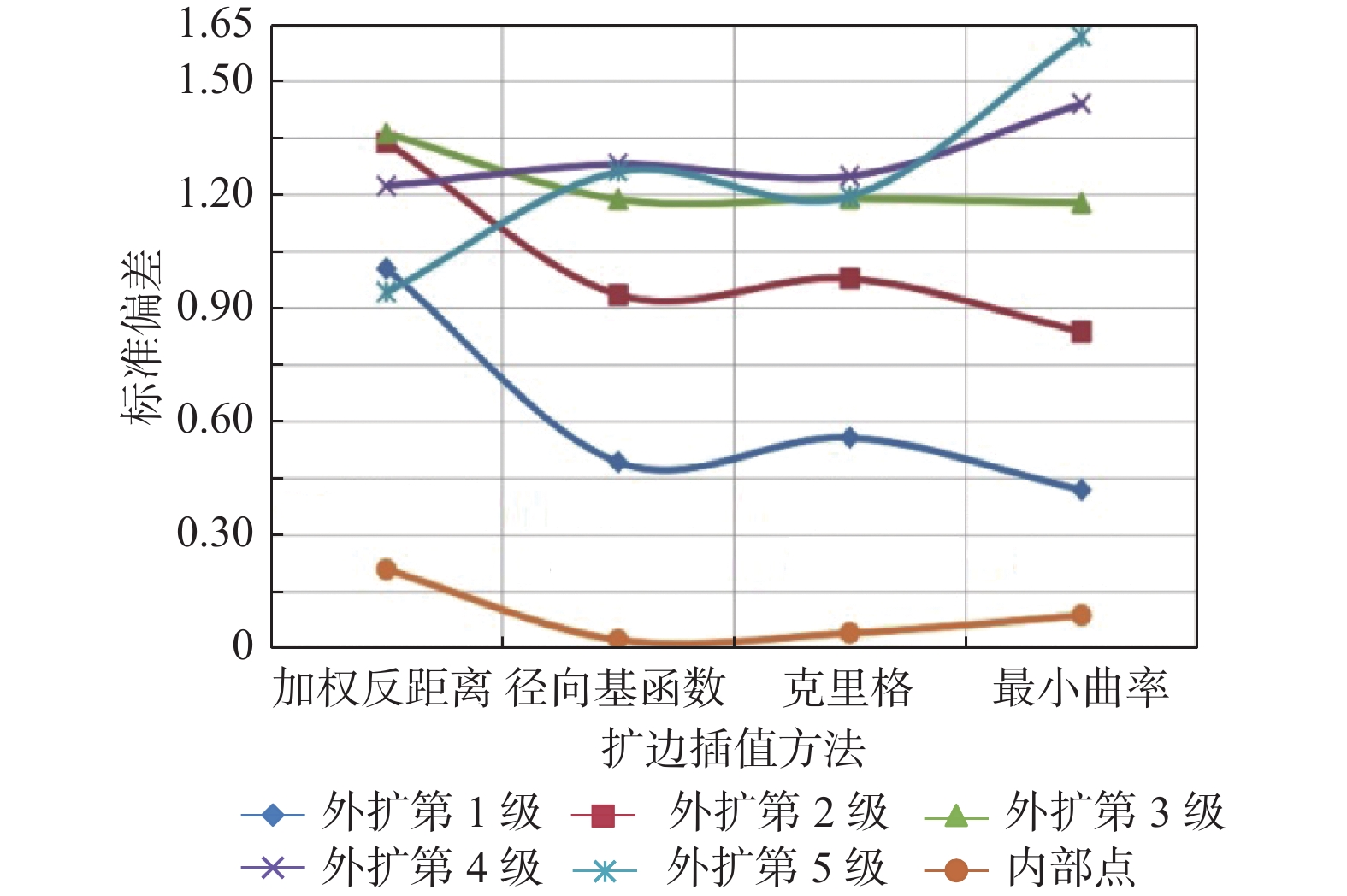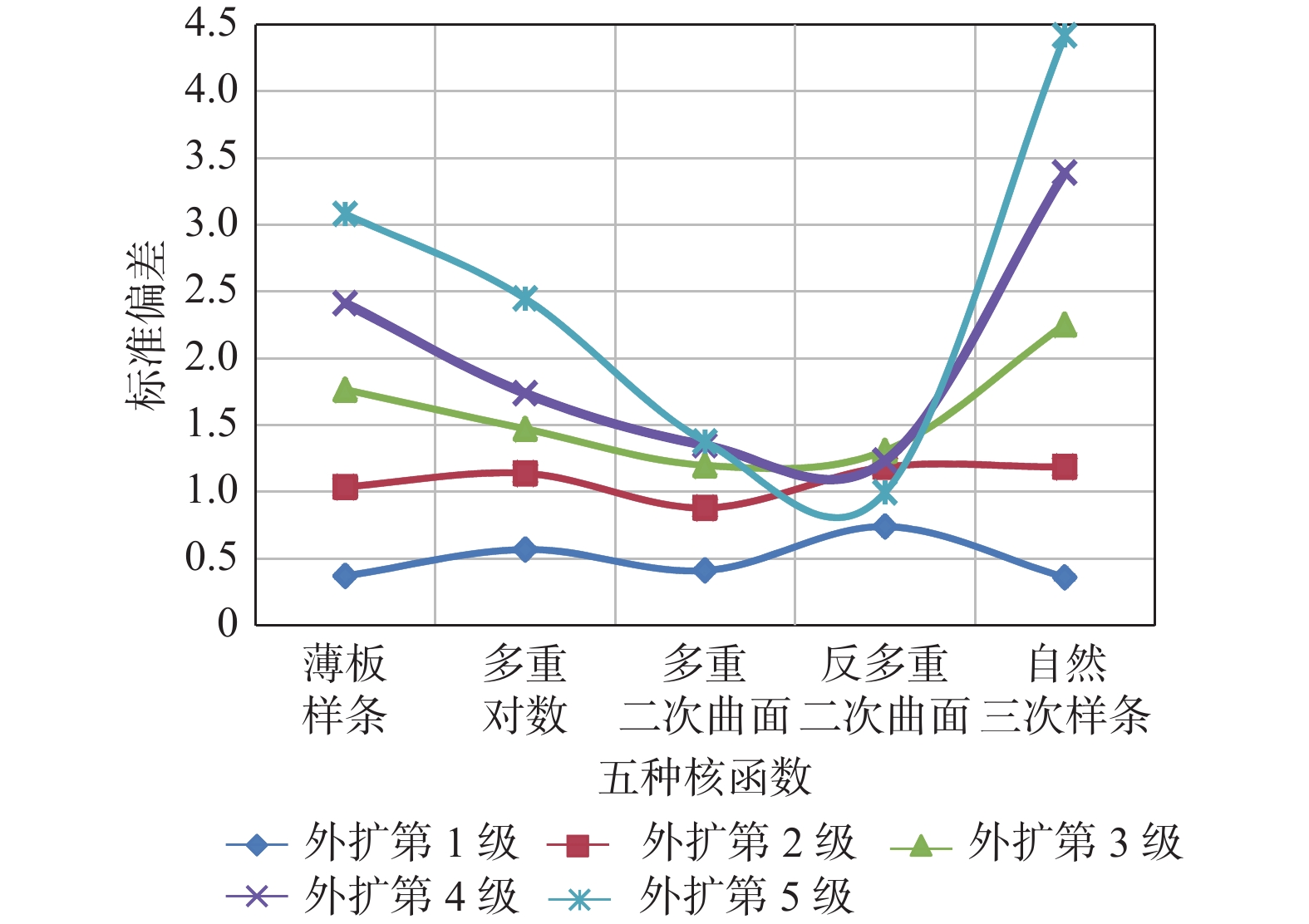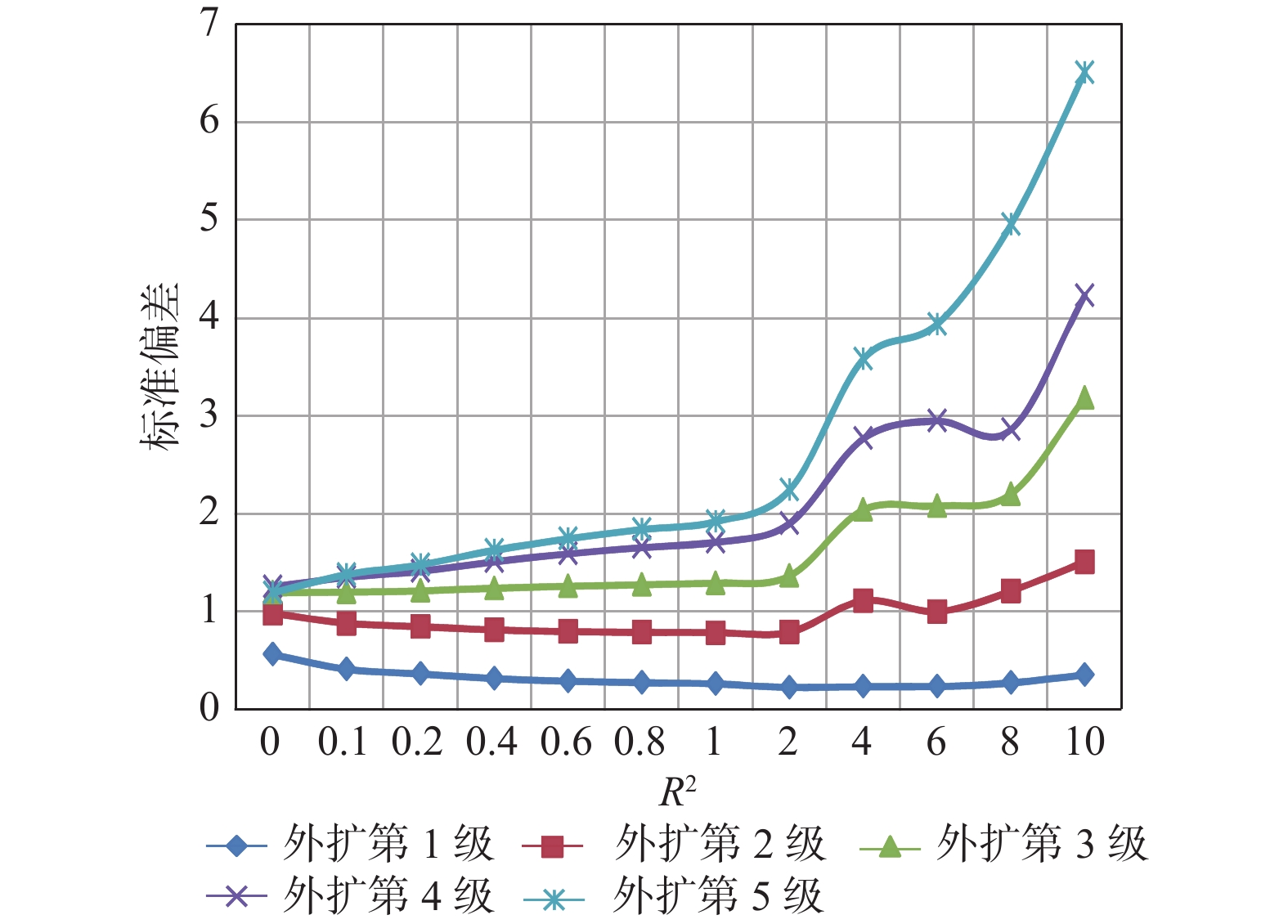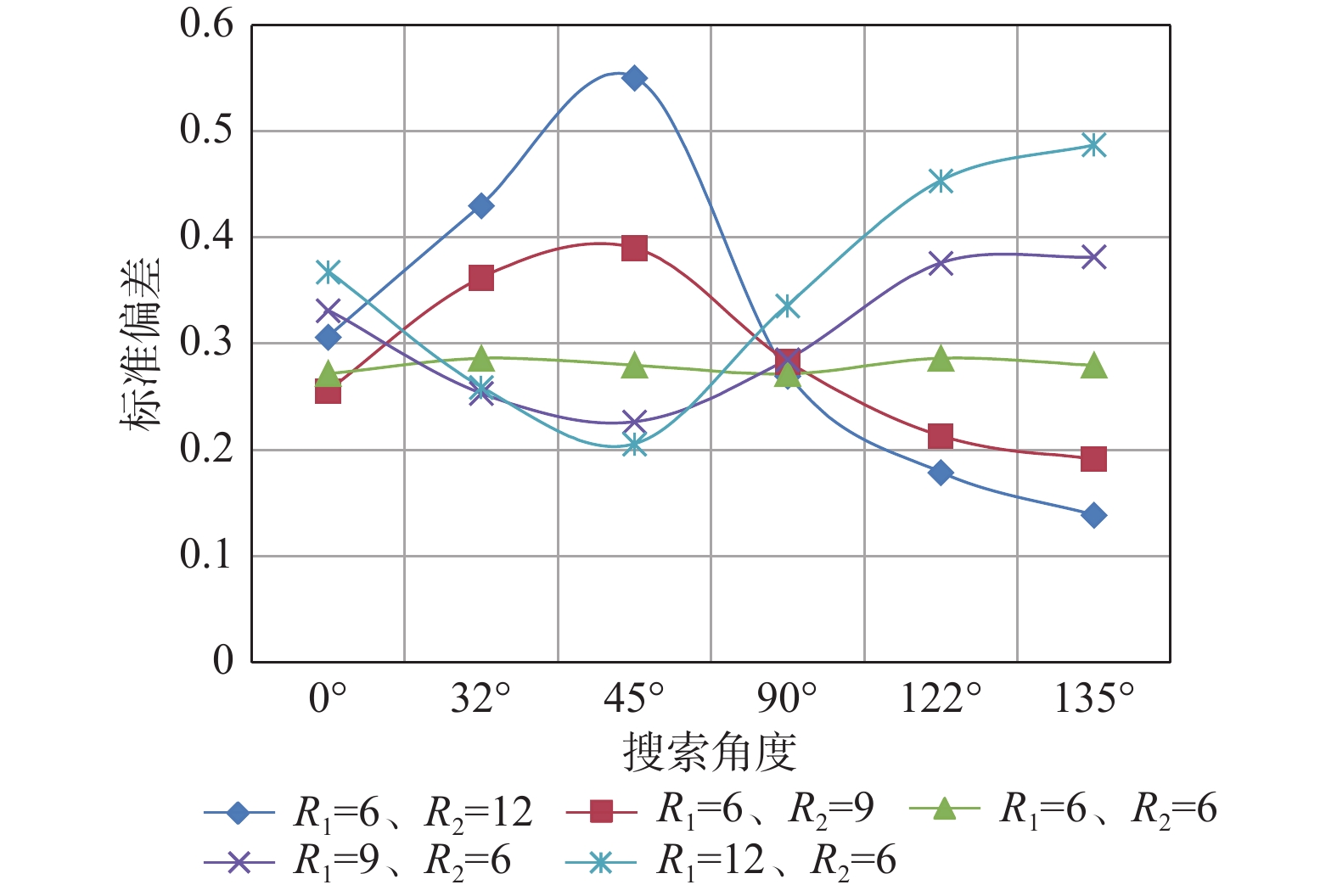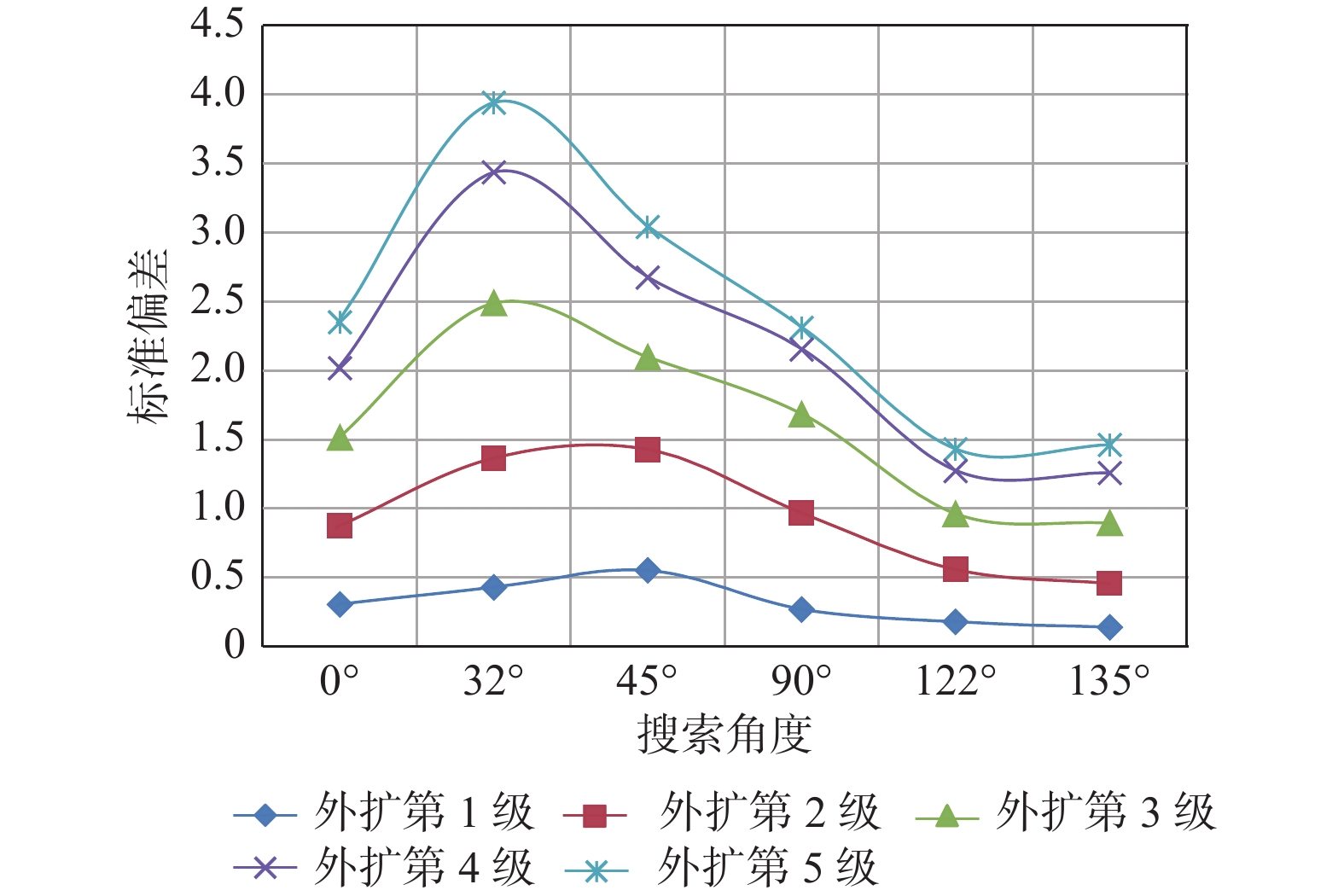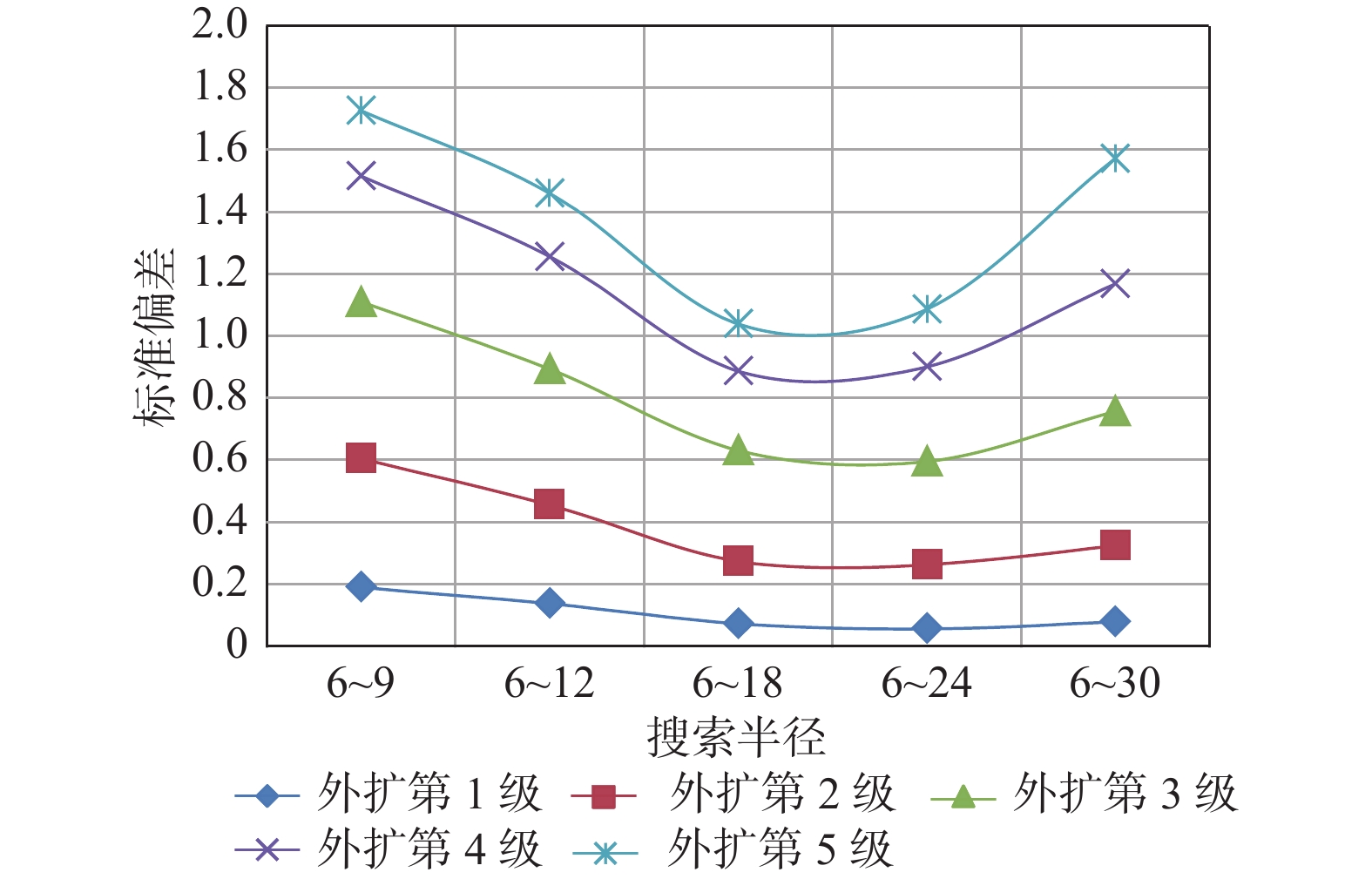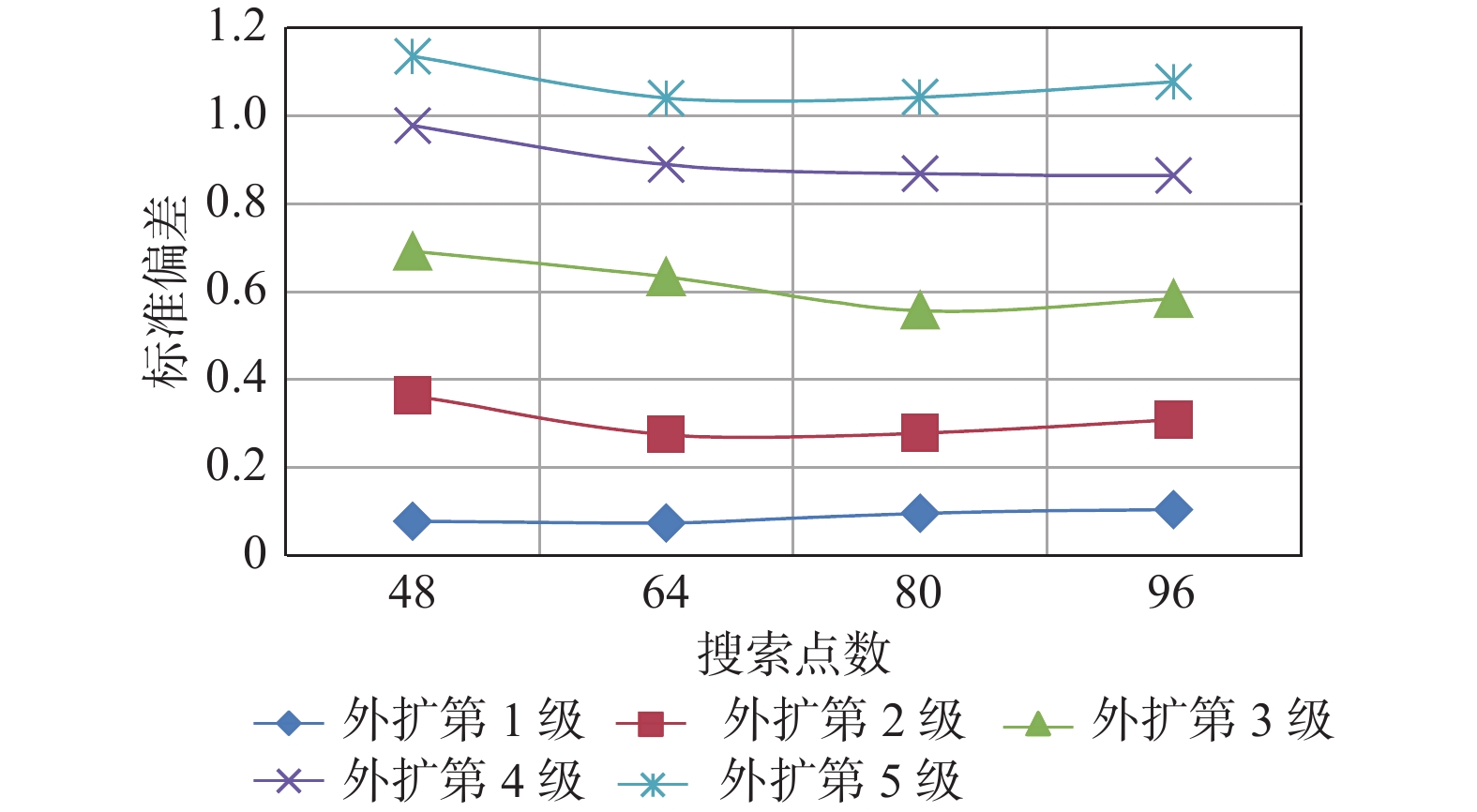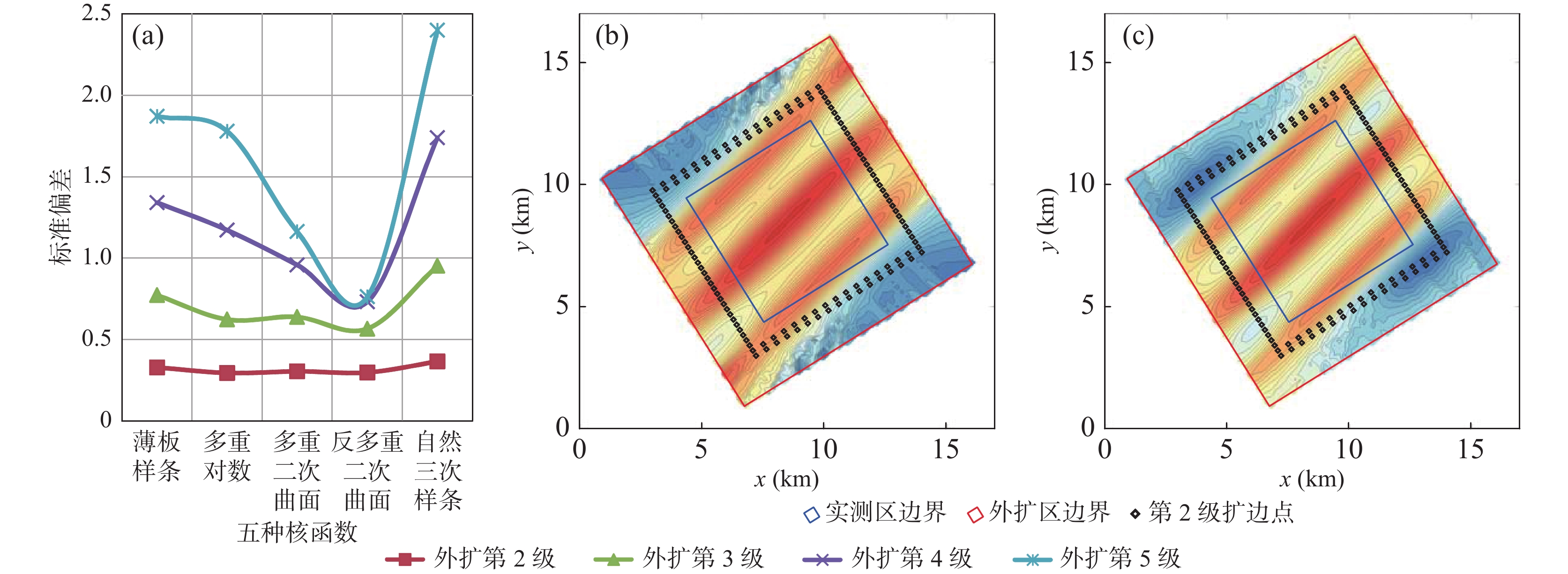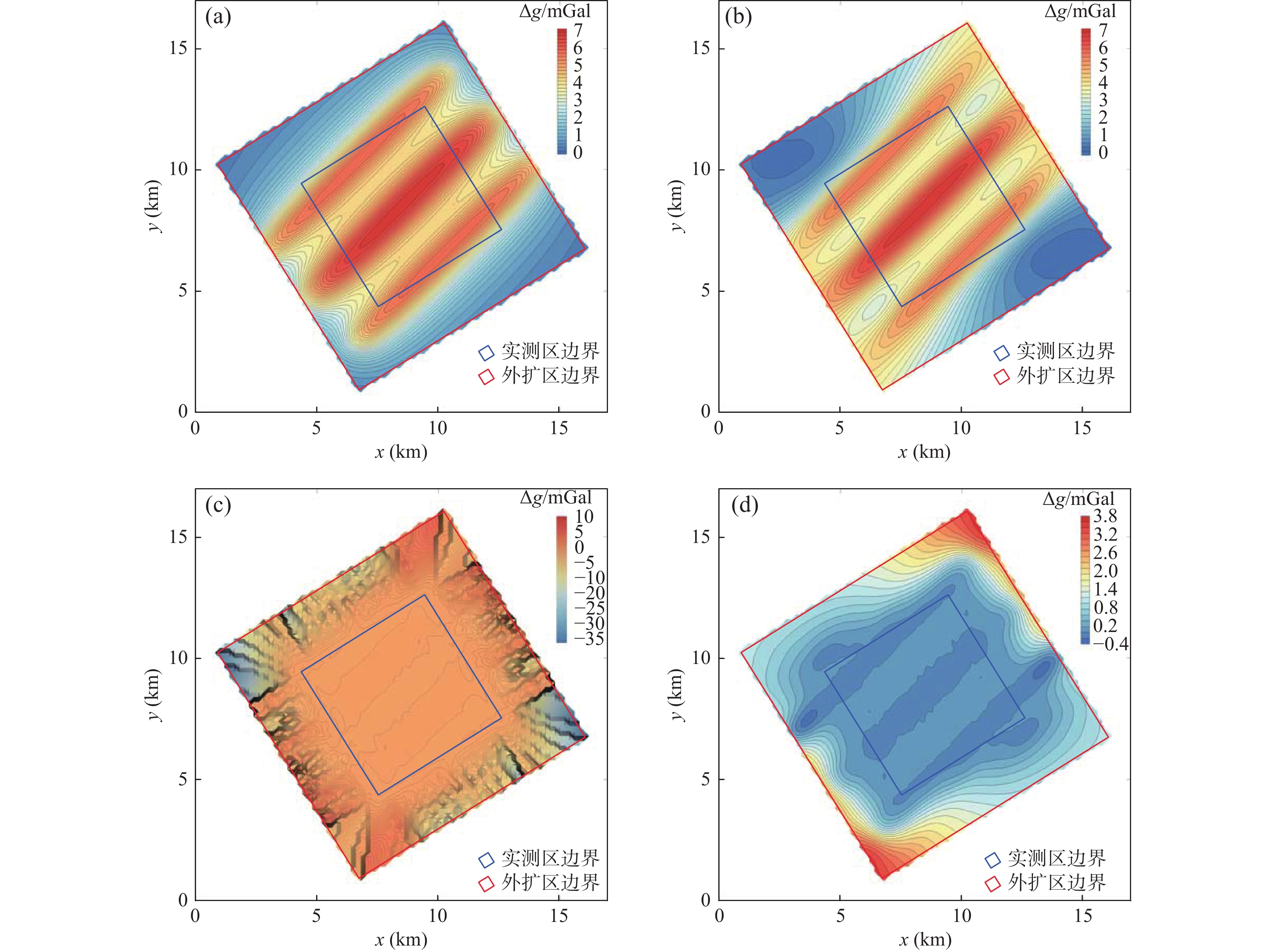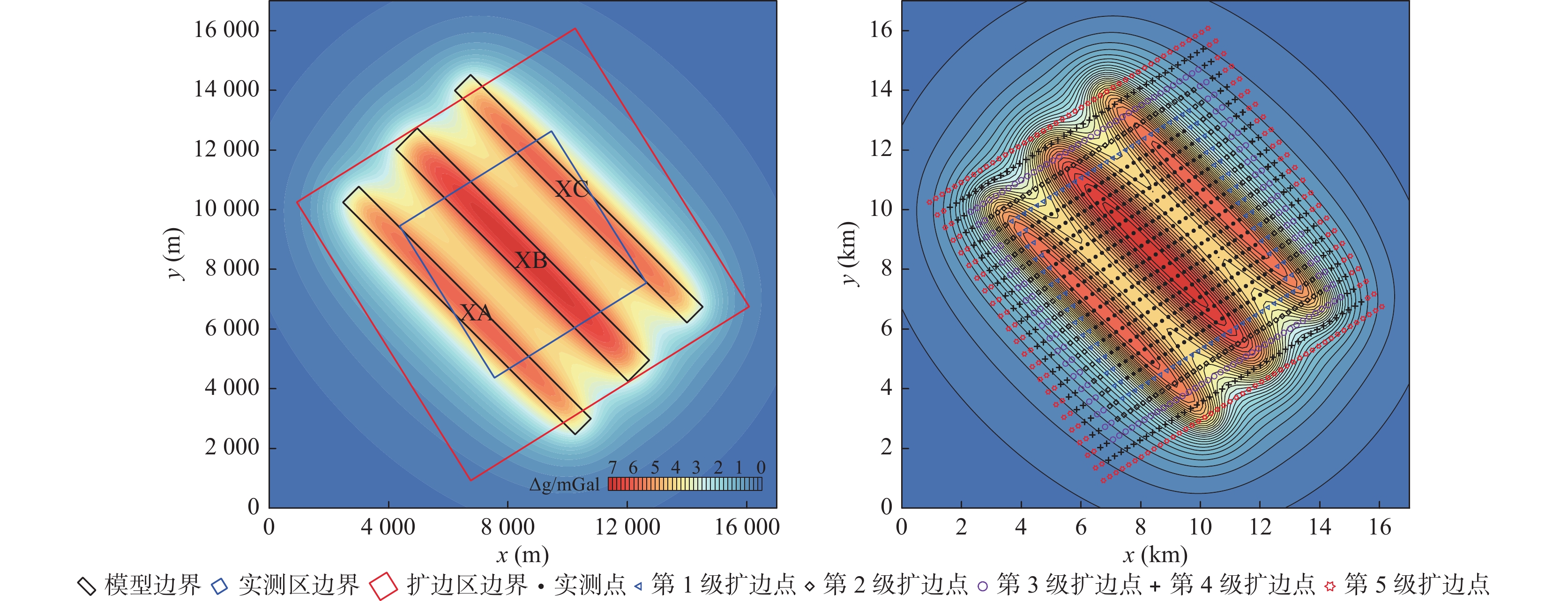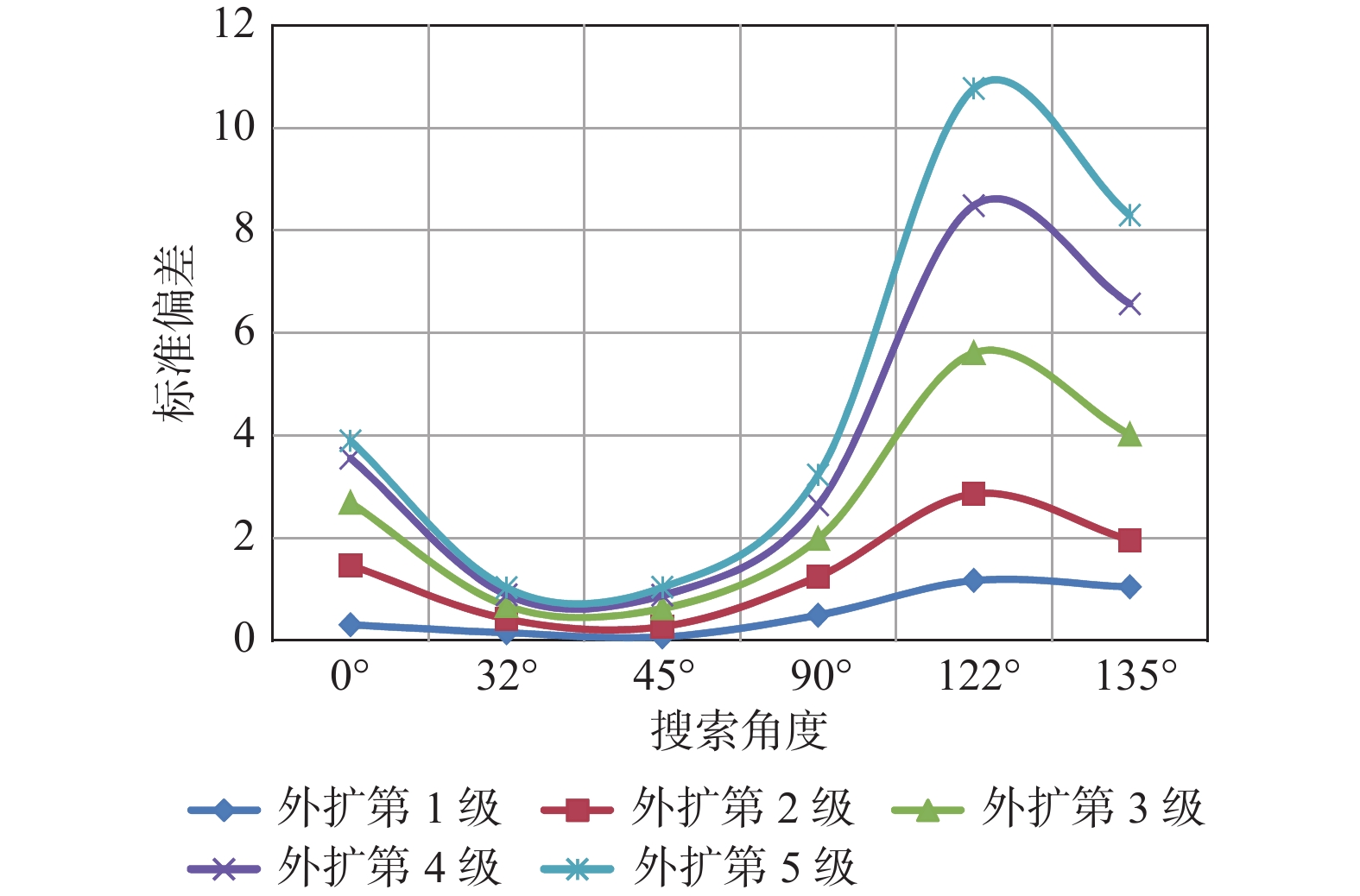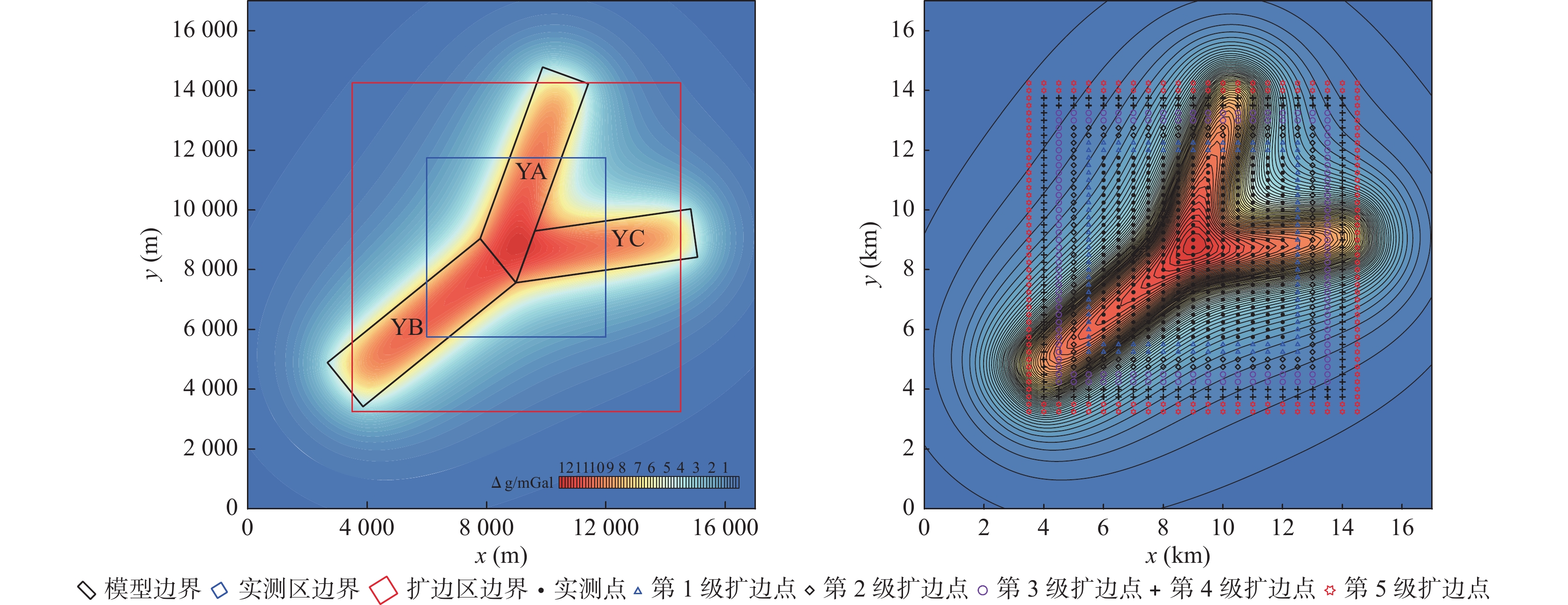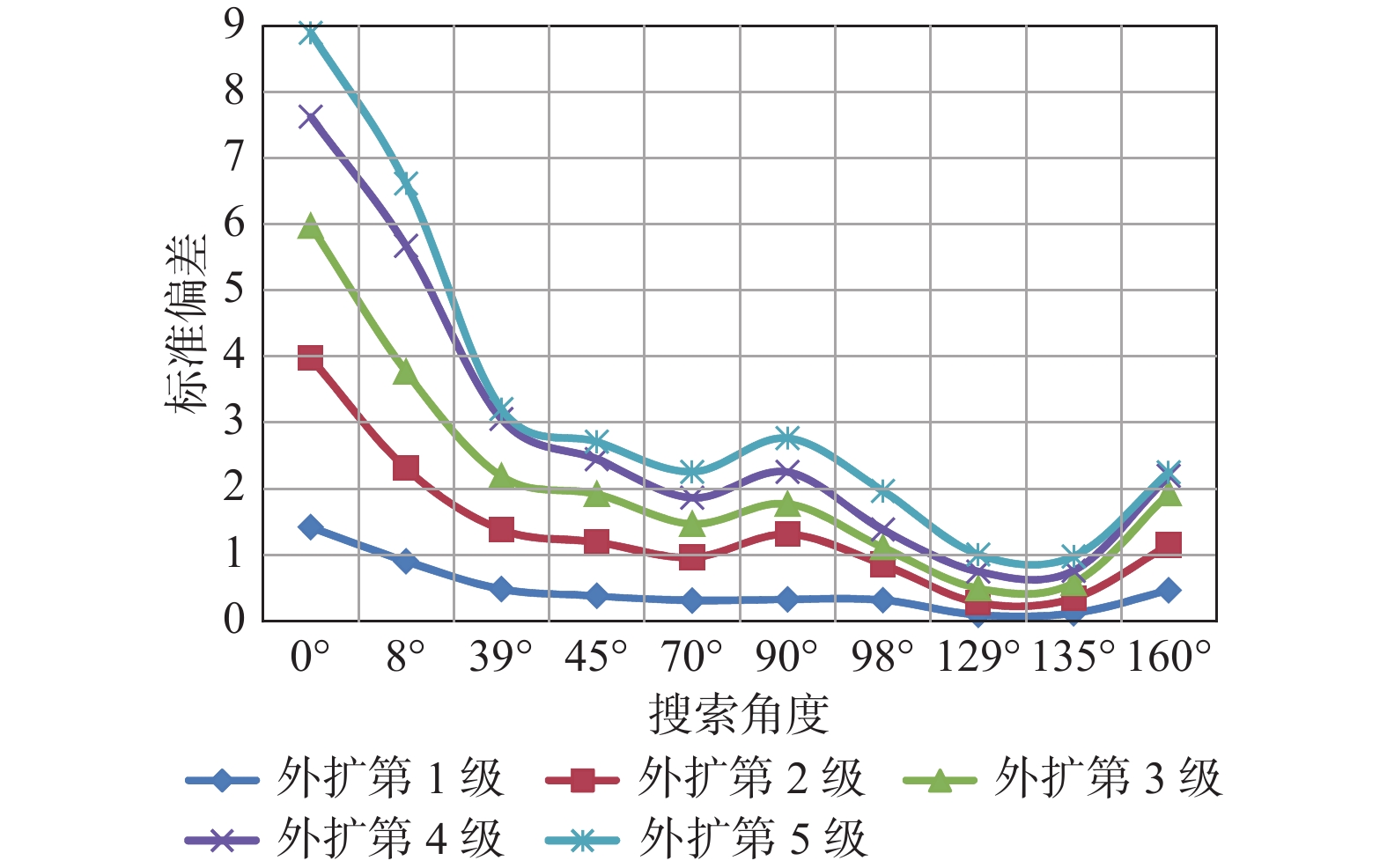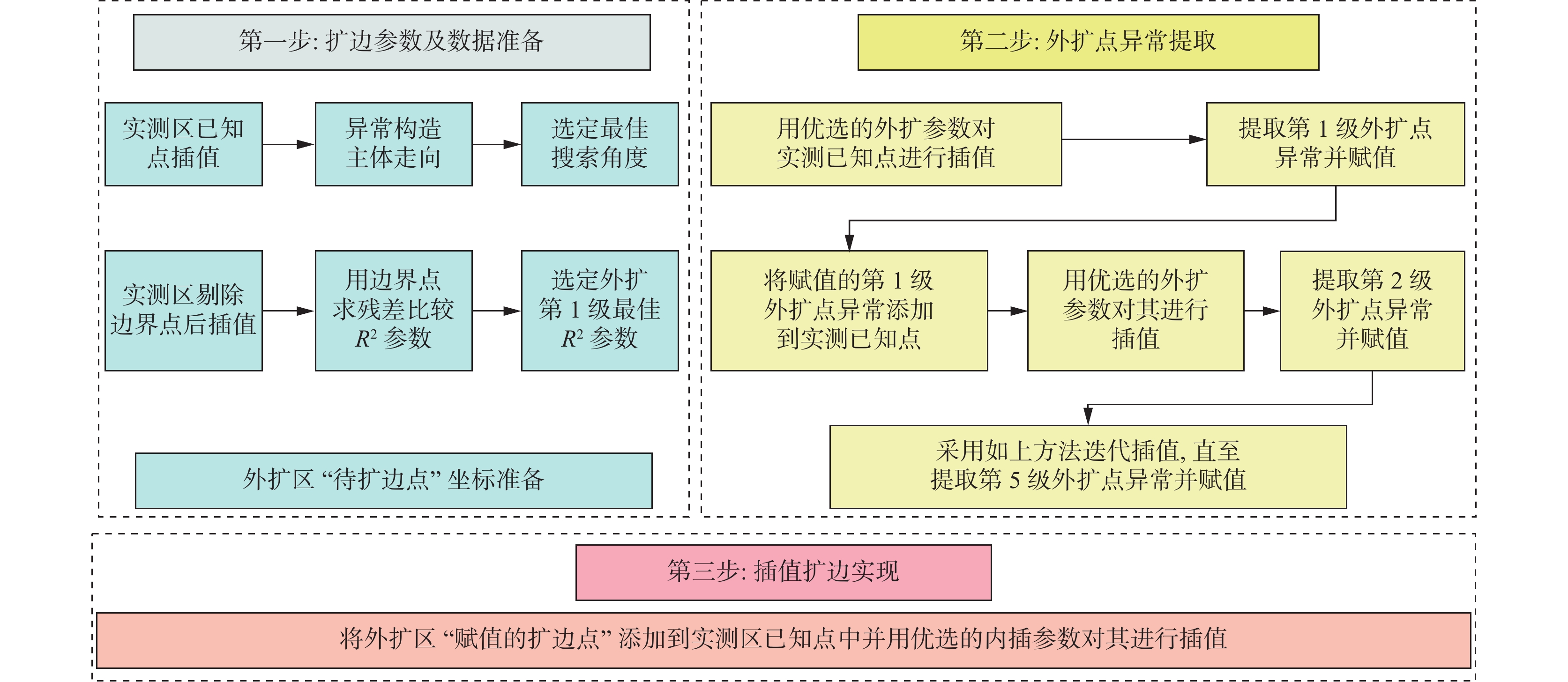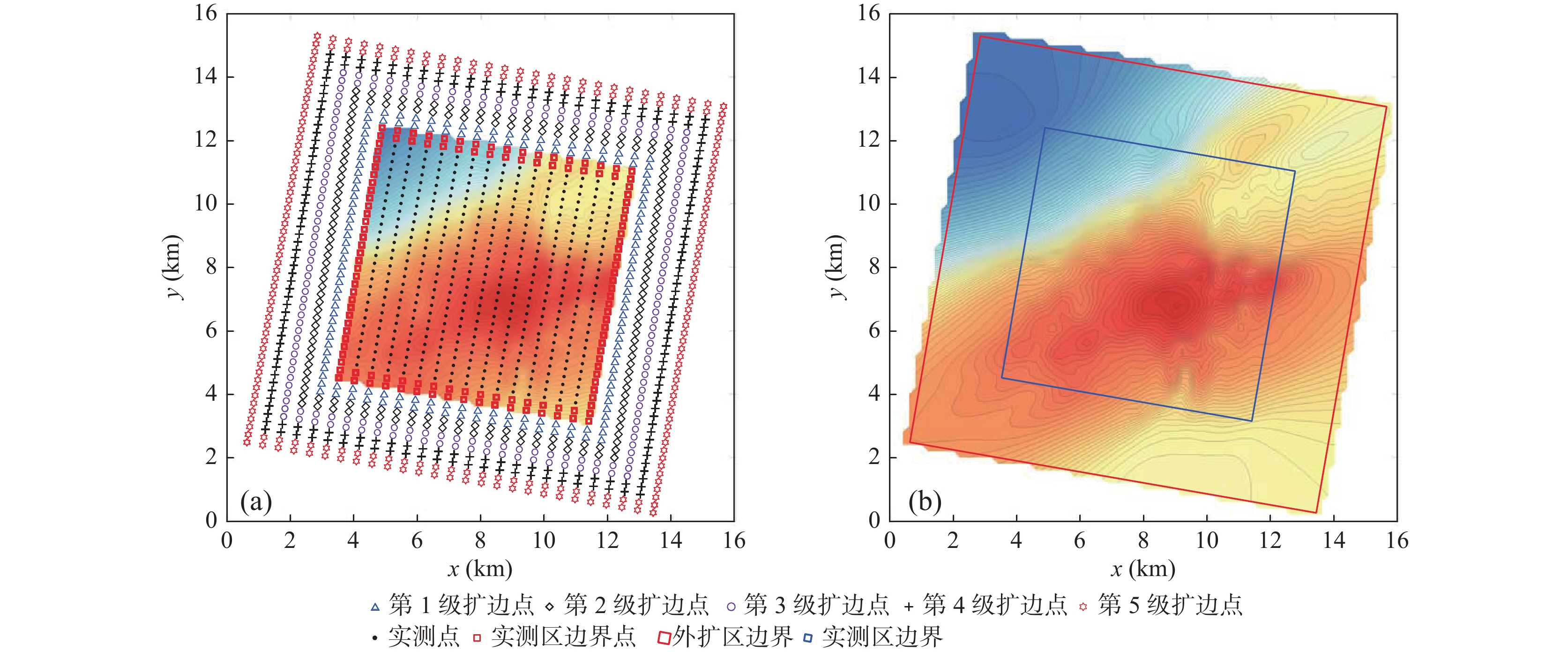Research on the Method of Gravity Data Edge Expanding Based on Step By Step Iterative Interpolation
-
摘要:
为了研究考虑异常变化特征的扩边插值方法,笔者使用理论重力异常模拟提取的1∶5万重力数据进行研究。通过Surfer软件中7种插值方法的比较,认为径向基函数法在数据扩边时能够获得较好的结果。在此基础上,笔者提出逐级迭代插值的思路并优选扩边参数如下:①核函数为多重二次曲面核函数。②搜索扇区为4个。③搜索点数为64个。④搜索半径R1/R2为6/18,且R2平行于异常整体走向。⑤搜索角度选为当搜索半径长轴R2平行于异常走向时的角度。⑥R2参数一般为0~1。其中,首次扩边时R2参数根据边界点残差对比结果选定,其余各级扩边时R2参数选0.1即可。银额盆地西部LY区块实际资料扩边应用时,采用“三步法”进行插值能够将外扩与内插参数联合考虑,扩边结果显示扩边区与实测区衔接处的重力异常连续光滑,扩边区较好的反映了异常整体趋势和局部变化特征。
Abstract:In order to study the edge expanding interpolation method considering the variation characteristics of gravity anomaly, we used 1∶50000 gravity data obtained from theoretical gravity anomaly simulation for research. Through the comparison of 7 interpolation methods in surfer software, it is considered that the radial basis function method can obtain better results in data expanding. On this basis, the idea of step by step iterative interpolation is proposed and the expanding parameters are optimized as follows: ① The kernel function is multiquadric function, ② The number of sectors to research is 4, ③ The maximum number of data to use from all sectors is 64, ④ The search radius R1/R2=6/18, and the radius R2 parallels to the main strike of the anomaly, ⑤ The search angle was selected when the search radius R2 is parallels to the main strike of the anomaly, ⑥ The R2 parameter is generally between 0 and 1, among them, R2 parameter is selected according to the residual error comparison results of boundary points when expanding for the first time, and 0.1 parameter can be selected for other levels of expanding. In the application of actual data edge expanding of LY block in west of Yin’e basin, the “three–step method” can be used for interpolation to jointly consider the external expanding and internal interpolation parameters. The expanding results show that the gravity anomaly at the junction of the expanding area and the measured area is continuous and smooth, and the expanding area better reflects the main strike and local variation characteristics of the anomaly.
-
Key words:
- gravity data /
- edge expanding method /
- step by step iterative /
- interpolation parameters
-

-
表 1 理论模型参数
Table 1. Parameters of the theoretical model
模型编号 角点坐标(m) 顶面埋深(m) 底面埋深(m) 密度差(g/cm3) A (10774,14001),(10244,14532),(2466,6754),(2996,6223) 500 1500 0.5 B (12731,12047),(12024,12755),(4246,4976),(4953,4269) 600 1600 0.5 C (14521,10254),(13990,10785),(6212,3007),(6742,2476) 500 1500 0.5 表 2 不同插值方法标准偏差结果
Table 2. Standard deviation results of different interpolation methods
插值方法 内部点 外扩第1级 外扩第2级 外扩第3级 外扩第4级 外扩第5级 带线性插值的三角剖分法 0.0412 #N/A #N/A #N/A #N/A #N/A 自然邻点 0.0497 #N/A #N/A #N/A #N/A #N/A 改进谢别德 133 11593 32642 5 #N/A #N/A 加权反距离 0.2093 1.0056 1.3398 1.3628 1.2244 0.9430 径向基函数 0.0230 0.4938 0.9367 1.1888 1.2818 1.2625 克里格 0.0415 0.5584 0.9797 1.1909 1.2506 1.1969 最小曲率 0.0882 0.4198 0.8386 1.1797 1.4419 1.6196 注:#N/A 表示在扩边区未形成“扩边 值” 。 表 3 5种核函数标准偏差结果
Table 3. Standard deviation results of five kernel functions
核函数 外扩
第1级外扩
第2级外扩
第3级外扩
第4级外扩
第5级薄板样条 0.3685 1.0353 1.7646 2.4110 3.0803 多重对数 0.5662 1.1369 1.4705 1.7352 2.4457 多重二次曲面 0.4087 0.8779 1.1968 1.3479 1.3751 反多重二次曲面 0.7376 1.1848 1.3064 1.2313 0.9944 自然三次样条 0.3575 1.1839 2.2529 3.3890 4.4181 表 4 不同R2标准偏差结果
Table 4. Standard deviation results of different R2
R2 外扩
第1级外扩
第2级外扩
第3级外扩
第4级外扩
第5级0 0.5584 0.9797 1.1909 1.2504 1.1892 0.1 0.4087 0.8779 1.1968 1.3479 1.3751 0.2 0.3608 0.8442 1.2099 1.4089 1.4746 0.4 0.3125 0.8105 1.2350 1.5078 1.6245 0.6 0.2876 0.7948 1.2562 1.5872 1.7404 0.8 0.2715 0.7869 1.2738 1.6525 1.8357 1 0.2593 0.7827 1.2883 1.7066 1.9171 2 0.2211 0.7878 1.3621 1.8961 2.2390 4 0.2324 1.1089 2.0364 2.7648 3.5768 6 0.2310 0.9977 2.0765 2.9441 3.9323 8 0.2708 1.2062 2.1974 2.8556 4.9508 10 0.3494 1.5053 3.1809 4.2262 6.5030 表 5 外扩第1级点的标准偏差结果
Table 5. Standard deviation results of the first level expanding points
R1~R2 6~12 6~9 6~6 9~6 12~6 各向异性比率 0.5 0.667 1 1.5 2 搜索角度=
各向异性
角度0° 0.3059 0.2550 0.2715 0.3310 0.3674 32° 0.4297 0.3617 0.2861 0.2529 0.2586 45° 0.5503 0.3898 0.2796 0.2263 0.2055 90° 0.2694 0.2825 0.2715 0.2850 0.3355 122° 0.1785 0.2127 0.2861 0.3758 0.4532 135° 0.1385 0.1908 0.2796 0.3816 0.4872 表 6 半径R1=6、R2=12时外扩区标准偏差结果
Table 6. Standard deviation results of expanding area whenradius R1=6 and R2=12
角度 外扩
第1级外扩
第2级外扩
第3级外扩
第4级外扩
第5级0° 0.3059 0.8721 1.5104 2.0137 2.3485 32° 0.4297 1.3634 2.4833 3.4310 3.9359 45° 0.5503 1.4258 2.0933 2.6701 3.0374 90° 0.2694 0.9643 1.6802 2.1498 2.3067 122° 0.1785 0.5567 0.9594 1.2718 1.4273 135° 0.1385 0.4560 0.8938 1.2566 1.4601 表 7 不同搜索半径外扩区标准偏差结果
Table 7. Standard deviation results of expanding area with different search radius
半径
R1~R2各向
异性比率外扩
第1级外扩
第2级外扩
第3级外扩
第4级外扩
第5级6~9 0.667 0.1908 0.6063 1.1106 1.5160 1.7281 6~12 0.5 0.1385 0.4560 0.8938 1.2566 1.4601 6~18 0.333 0.0738 0.2743 0.6327 0.8879 1.0395 6~24 0.25 0.0574 0.2645 0.5969 0.9025 1.0871 6~30 0.2 0.0793 0.3245 0.7580 1.1690 1.5718 表 8 不同搜索点数外扩区标准偏差结果
Table 8. Standard deviation results of expanding area with different search points
搜索点数 48 64 80 96 外扩第1级 0.0781 0.0738 0.0957 0.1037 外扩第2级 0.3628 0.2743 0.2779 0.3088 外扩第3级 0.6909 0.6327 0.5561 0.5834 外扩第4级 0.9767 0.8879 0.8673 0.8632 外扩第5级 1.1345 1.0395 1.0415 1.0765 表 9 仅考虑内部或外部最佳参数时外扩区标准偏差结果
Table 9. Standard deviation results of expanding area when only considered internal or external optimal parameters
参数选取 内部点 外扩第1级 外扩第2级 外扩第3级 外扩第4级 外扩第5级 仅考虑外扩最佳参数时 0.01659 0.0738 0.2743 0.6327 0.8879 1.0395 仅考虑内插最佳参数时 0.01656 0.4235 1.7454 3.7984 6.0762 8.8219 表 10 不同搜索角度时新模型的扩边结果
Table 10. Edge expanding results of new model with different search angles
搜索
角度0° 32° 45° 90° 122° 135° 外扩第1级 0.3109 0.1547 0.0738 0.4983 1.1727 1.0471 外扩第2级 1.4690 0.4251 0.2743 1.2504 2.8641 1.9599 外扩第3级 2.6924 0.6833 0.6327 1.9878 5.6132 4.0206 外扩第4级 3.5599 0.8962 0.8879 2.6471 8.4885 6.5704 外扩第5级 3.9009 1.0328 1.0395 3.2340 10.7697 8.3004 表 11 不同搜索角度时Y模型的扩边结果
Table 11. Edge expanding results of Y model with different search angles
搜索
角度外扩
第1级外扩
第2级外扩
第3级外扩
第4级外扩
第5级0° 1.4208 3.9802 5.9726 7.6232 8.8935 8° 0.9059 2.3075 3.7689 5.6709 6.6191 39° 0.4838 1.3818 2.1895 3.0557 3.2056 45° 0.3833 1.1941 1.9197 2.4483 2.7107 70° 0.3108 0.9633 1.4703 1.8648 2.2582 90° 0.3309 1.3128 1.7726 2.2548 2.7663 98° 0.3186 0.8561 1.1129 1.3845 1.9681 129° 0.0935 0.2776 0.4958 0.7509 1.0083 135° 0.1206 0.3465 0.5737 0.7635 0.9791 160° 0.4661 1.1499 1.9294 2.1958 2.2504 -
白世彪, 王建, 常直杨. Surfer10地学计算机制图[M]. 北京: 科学出版社, 2012
BAI Shibiao, WANG Jian, CHANG Zhiyang. Surfer10 Geoscience Computer Mapping[M]. Beijing: Science Press, 2012.
陈欢欢,李星,丁文秀. Surfer8. 0等值线绘制中的十二种插值方法[J]. 工程地球物理学报,2007,4(1):52–57. doi: 10.3969/j.issn.1672-7940.2007.01.011
杜红悦,张浚哲,宫辉力. DEM产品数据质量分析研究与系统实现[J]. 测绘科学,2009,34(4):191–194.
段本春,徐世浙. 磁(重力)异常局部场与区域场分离处理中的扩边方法研究[J]. 物探化探计算技术,1997,19(4):298–304.
范威,江越潇,李寅,等. 湖北省江汉平原重点区地下水监测网优化研究[J]. 西北地质,2021,54(3):222–228. doi: 10.19751/j.cnki.61-1149/p.2021.03.019
李盼,戴前伟,吕宏安. 基于泛克里格方法的位场扩边处理[J]. 物探化探计算技术,2018,40(6):741–747. doi: 10.3969/j.issn.1001-1749.2018.06.08
刘芬,王万银,纪晓琳. 空间域和频率域平面位场延拓影响因素和稳定性分析[J]. 物探与化探,2019,43(2):320–328.
刘兆平,杨进,武炜. 地球物理数据网格化方法的选取[J]. 物探与化探,2010,34(1):93–97.
骆遥,吴美平. 位场向下延拓的最小曲率方法[J]. 地球物理学报,2016,59(1):240–251. doi: 10.6038/cjg20160120
马国庆,孟令顺,杜晓娟,等. 磁法数据处理中的扩边和优化中值滤波方法的研究[J]. 物探化探计算技术,2010,32(2):194–199. doi: 10.3969/j.issn.1001-1749.2010.02.016
毛小平,吴蓉元,曲赞. 频率域位场下延的振荡机制及消除方法[J]. 石油地球物理勘探,1998,33(2):230–237. doi: 10.13810/j.cnki.issn.1000-7210.1998.02.011
庞振兴,张传定,叶修松. Surfer8. 0在重力异常数据格网化中的应用[J]. 海洋测绘,2008,28(1):43–51. doi: 10.3969/j.issn.1671-3044.2008.01.012
孙文,吴晓平,王庆宾,等. 高精度重力数据格网化方法比较[J]. 大地测量与地球动力学,2015,35(2):342–345. doi: 10.14075/j.jgg.2015.02.037
王万银,邱之云,刘金兰,等. 位场数据处理中的最小曲率扩边和补空方法研究[J]. 地球物理学进展,2009,24(4):1327–1338. doi: 10.3969/j.issn.1004-2903.2009.04.022
王万银,邱之云. 一种稳定的位场数据最小曲率网格化方法研究[J]. 地球物理学进展,2011,26(6):2003–2010. doi: 10.3969/j.issn.1004-2903.2011.06.014
王兆国,程顺有,刘财. 地球物理勘探中几种二维插值方法的误差分析[J]. 吉林大学学报(地球科学版),2013,43(6):1997–2004. doi: 10.13278/j.cnki.jjuese.2013.06.040
吴洪彬. 多项式拟合扩边方法[J]. 黑龙江科技信息,2012,16:8.
吴太旗,黄谟涛,欧阳永忠,等. 高精度海洋重力异常格网插值技术研究[J]. 测绘科学,2008,33(5):70–72. doi: 10.3771/j.issn.1009-2307.2008.05.024
吴卫国. Surfer网格化与白化处理在数据扩边中的应用——以1: 5万水系沉积物测量成图为例[J]. 物探与化探,2015,39(3):602–605.
肖锋,孟令顺,吴燕刚. 在波数域计算一维重磁异常导数的Matlab语言算法[J]. 物探与化探,2008,32(3):316–320.
许海红,韩小锋,袁炳强,等. 基于径向基函数的1: 5万规则分布重力数据插值参数优选[J]. 物探与化探,2021,45(6):1539–1552.
许海红,卢进才,李玉宏,等. 基于Surfer的1: 50000规则测网重力数据网格化方法选取——以银额盆地赛汉陶来区块重力资料为例[J]. 地球物理学进展,2015,30(6):2566–2573.
徐如刚,梁霄,孙鸿博,等. 扩边尺度对重力异常分层分离处理的影响——以插值切割法为例[J]. 大地测量与地球动力学,2021,41(3):221–228. doi: 10.14075/j.jgg.2021.03.001
姚长利,管志宁,高德章,等. 低纬度磁异常化极方法——压制因子法[J]. 地球物理学报,2003,46(5):690–696. doi: 10.3321/j.issn:0001-5733.2003.05.017
曾小牛,李夕海,侯维君,等. 基于凸集投影的重力同时填充扩边和去噪方法[J]. 石油地球物理勘探,2020,55(1):197–205. doi: 10.13810/j.cnki.issn.1000-7210.2020.01.023
曾小牛,李夕海,刘继昊,等. 基于凸集投影的重力数据扩充下延一体化方法[J]. 石油地球物理勘探,2019,54(5):1166–1173. doi: 10.13810/j.cnki.issn.1000-7210.2019.05.025
张锦明,游雄,万刚. 径向基函数算法中插值参数对DEM精度的影响[J]. 武汉大学学报·信息科学版,2013,38(5):608–612. doi: 10.13203/j.whugis2013.05.013
张志厚,徐世浙,余海龙,等. 位场向下延拓的迭代法的扩边方法[J]. 浙江大学学报(工学版),2013,47(5):918–924.
中华人民共和国国土资源部. DZ/T 0004-2015, 重力调查技术规范(1: 50000)[S]. 北京: 地质出版社, 2015
Ministry of Land and Resources of the People’s Republic of China. DZ/T 0004-2015, The technical specification for gravity survey (1: 50000)[S]. Beijing: Geological Publishing House, 2015.
-




 下载:
下载:
